The Ashley River – National Treasure or Garbage Dump?
The Ashley River is a state scenic river and is considered by many to be a national treasure. It is steeped in natural beauty and historical significance and is used today by people who love to fish and “recreate” by boat, canoe, kayak, and power boat.
The challenge is that people also trash it. They throw litter out car windows, which ends up in ditches and creeks and are carried into the river; they even dump heavy things like rubber tires and old television sets. How then do we manage such a resource when there are so many people working against it?
One way is by mobilizing people and organizations who care. The Summerville Saltwater Anglers is one such organization. They love the river and know that the quality of their fishing depends on the quality of the water. On March 3, the organization, along with scores of individuals from the community, including myself and Howard Bridgman who were there representing the Ashley Scenic River Advisory Council (ASRAC), showed up with their boats or simply to volunteer, with the goal to remove all the trash—a daunting task.
The Ashley Scenic River Advisory Council, of which I am chairman, was founded about 18 years ago. While Executive Director of Drayton Hall, the historic house museum that is bordered by the Ashley River, I helped lead the campaign for the Ashley to be designated a State Scenic River under the auspices of the South Carolina Department of Natural Resources—a designation that called ASRAC into being. ASRAC also produced the Ashley Scenic River Management Plan to protect and guide the future conservation of the river.
Since then we’ve seen continued concern for the Ashley offset with events like the Ashley River Clean Up; still, the situation brings forth mostly mixed feelings. One is that I remain distressed by the choices made by people of all ages to trash the landscape and waterways, seemingly without a second thought. What’s more, it’s not only the Ashley River, but roadsides and rivers across the entire state of South Carolina! The second feeling is one of uplift due to the concern of everyday citizens, and their deciding to act on behalf of precious natural resources like the Ashley River.
UPDATE: Read the follow-up article in the Summerville Journal Scene, March 22, 2018
The photographs here illustrate the beauty of the Ashley as well as one of its hidden characteristics that you may not be familiar with: the hard marl bottom of the river that can be seen in shallow water.
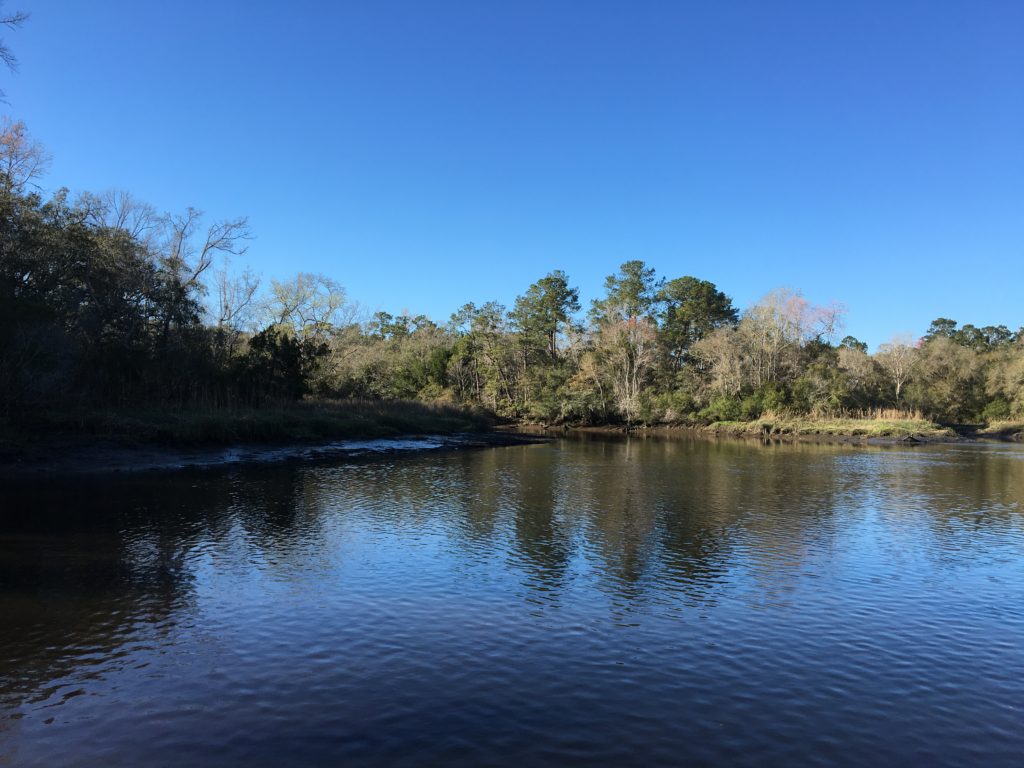
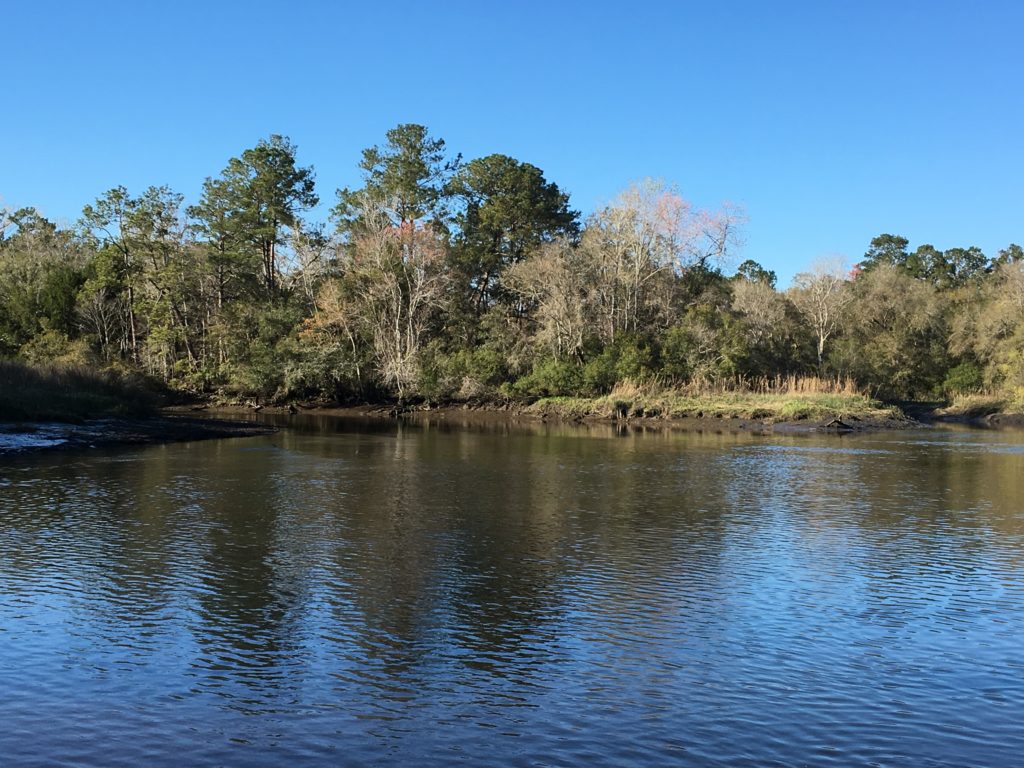
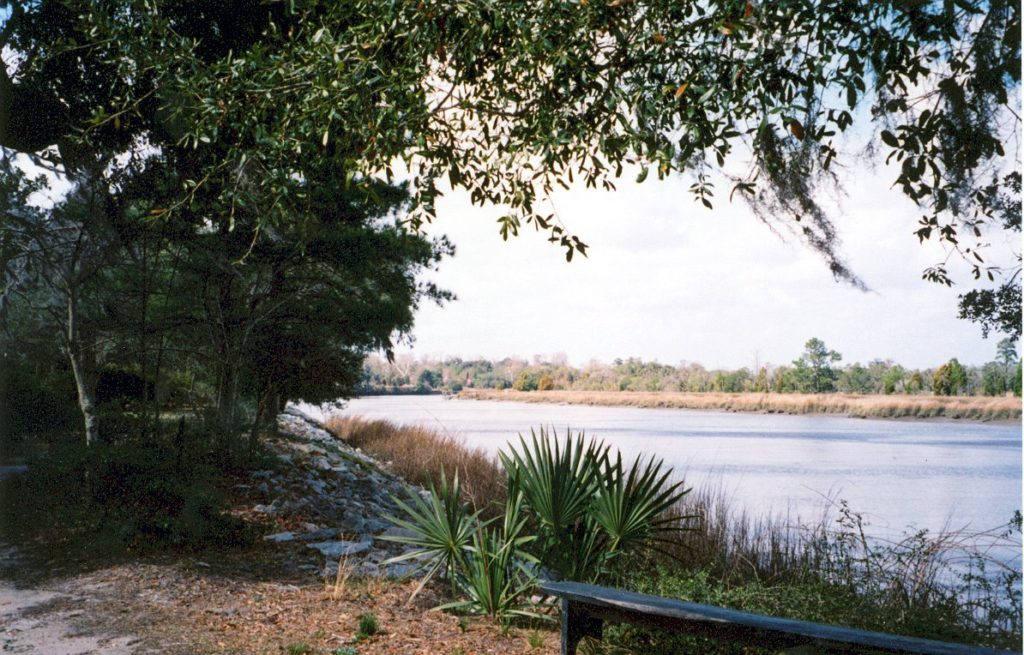
The Ashley River seen from Drayton Hall. Photo credit: Kellie Thorne, National Scenic Byways
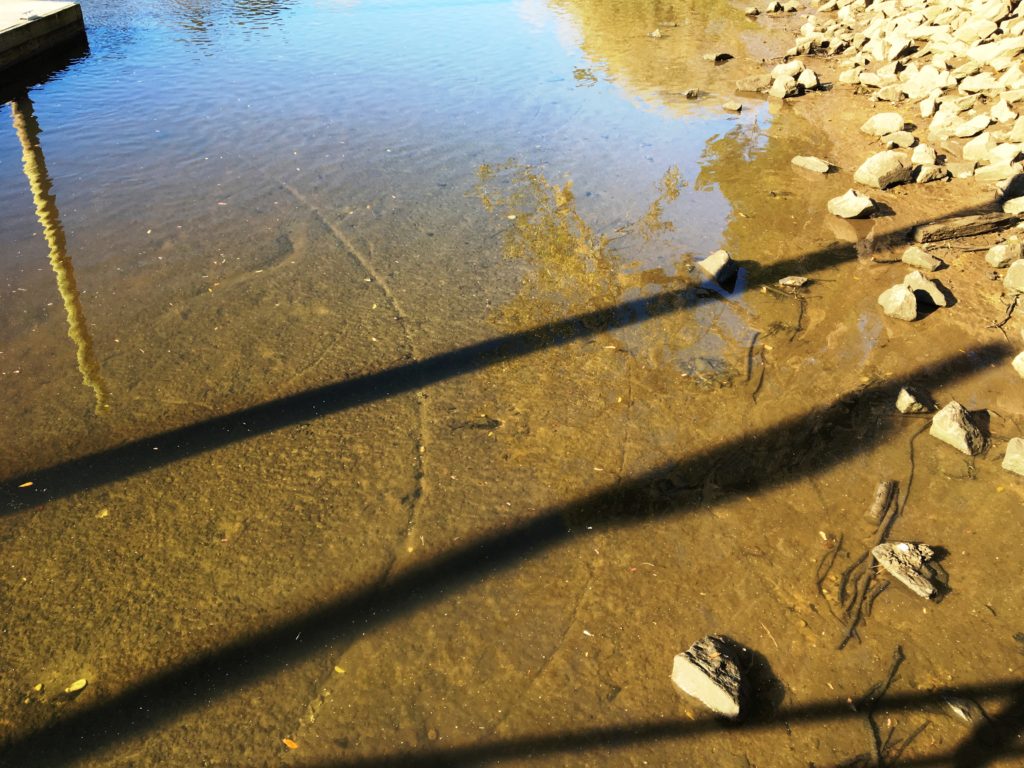
The hard marl bottom of the river that can be seen in shallow water. Marl or marlstone is a calcium carbonate—marine deposits that are millions of years old—you can see how the surface has been recently scraped and scarred by motor boats.
Other photographs show a darker reality: the quantity of junk that volunteers collected and removed from the Ashley—overflowing two enormous dumpsters, and including tires, televisions, toys, plastic bottles, cans, paper, and much more.
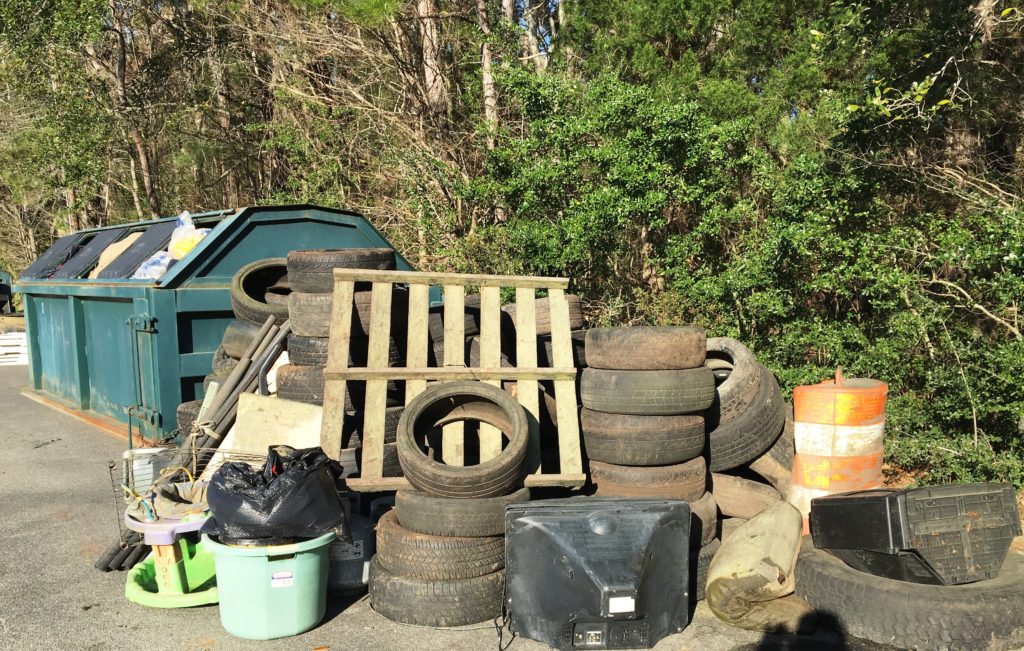
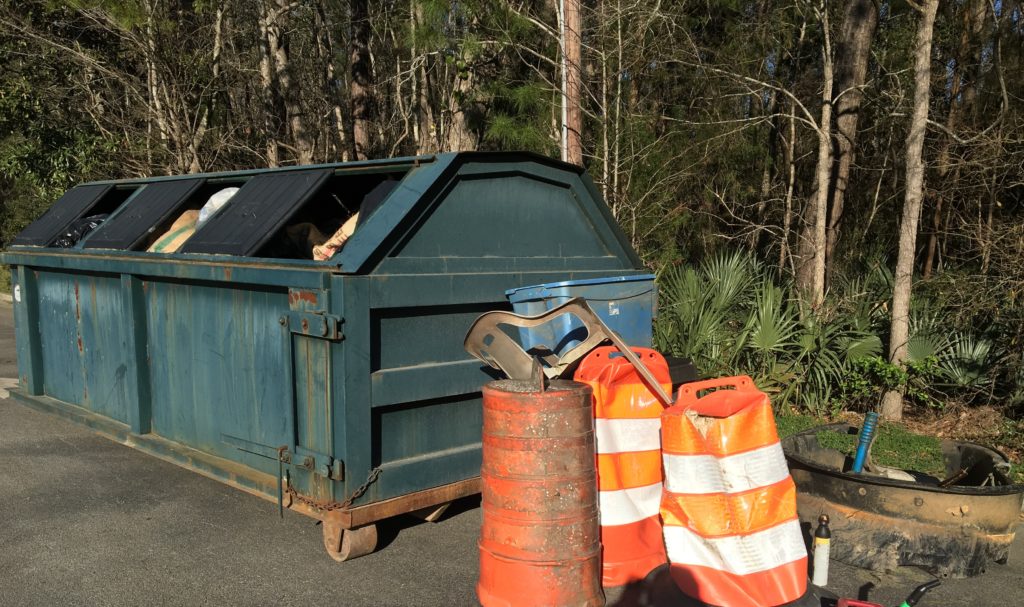
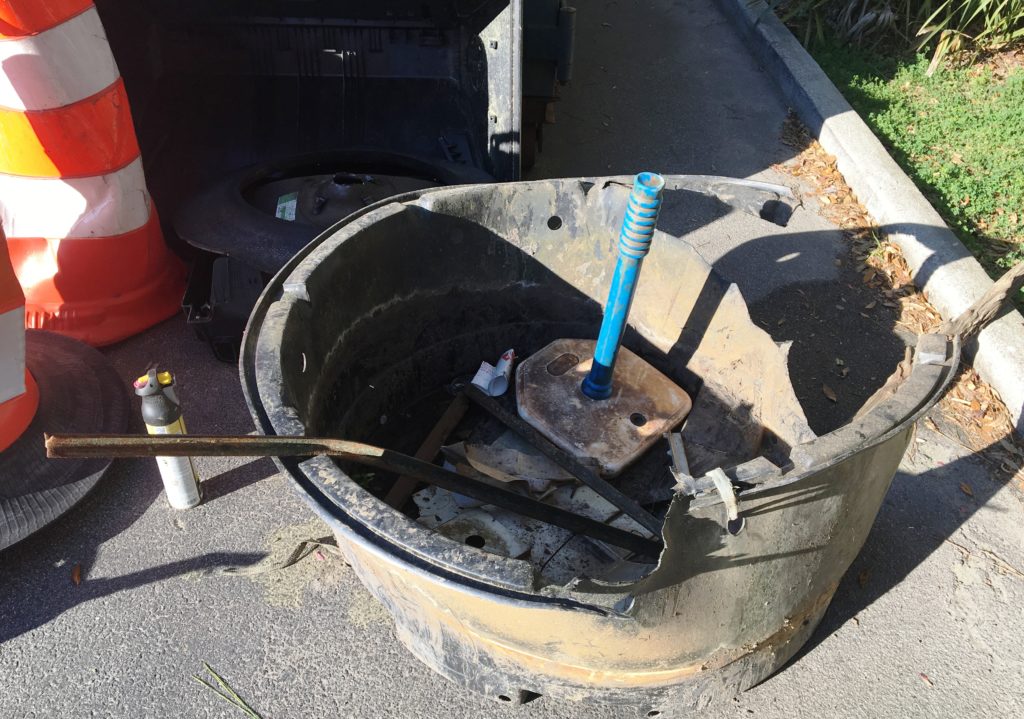
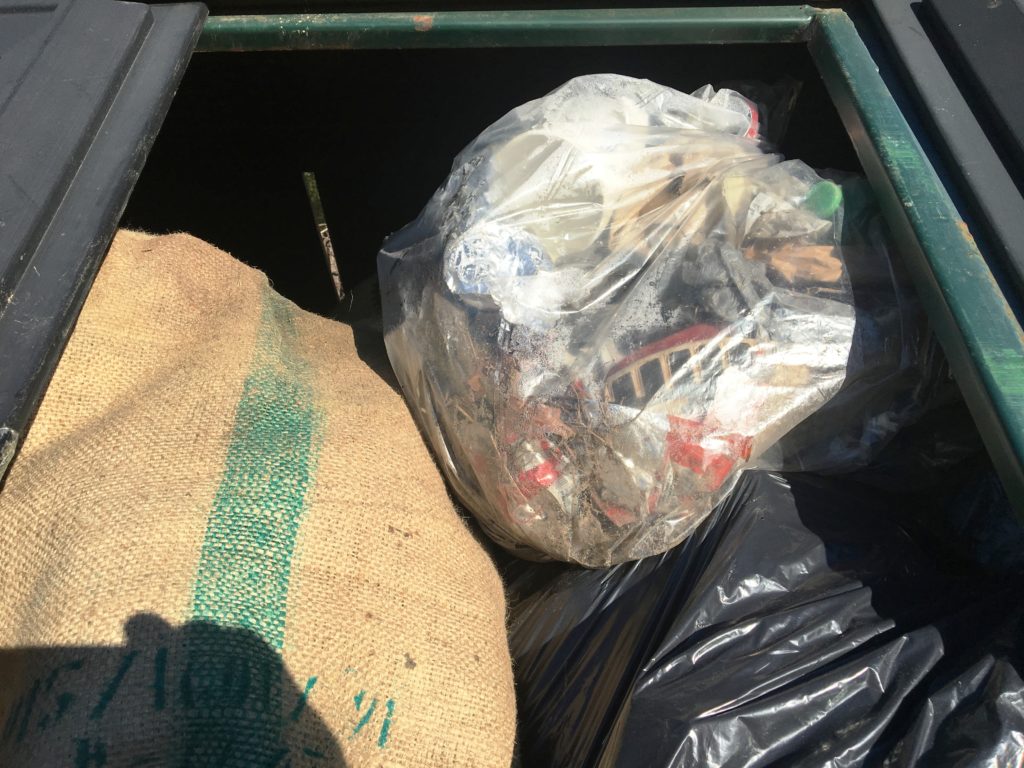
I’m open to suggestions about what we can all do to promote a sense of responsibility for our environment—the scenic and historical—and would be glad to share them with my colleagues at ASRAC and others throughout the county.
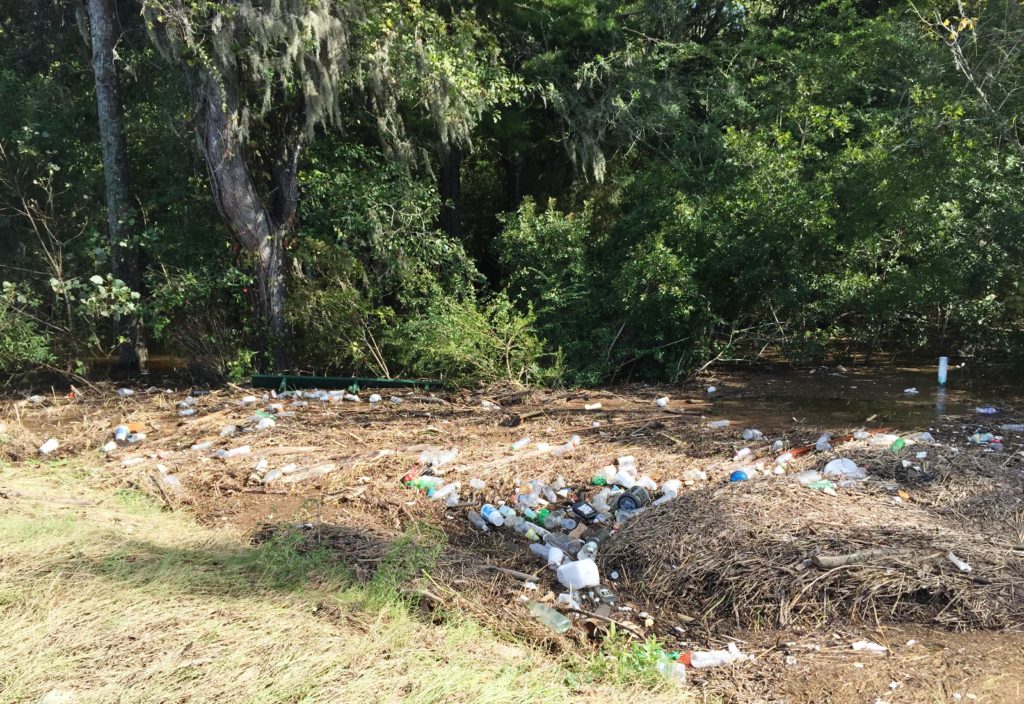
The problem is ongoing. After recent flooding, we found this litter deposit on the far side of Dorchester Creek, adjacent to Dorchester Road; as locals know, this section of the Sawmill Branch empties into the Ashley River.
 George W. McDaniel, Ph.D., is President of McDaniel Consulting, LLC, a strategy firm that helps organizations use history to build bridges within itself and to its broader constituents. The company’s tag line, “Building Bridges through History,” is grounded in McDaniel’s personal beliefs and his experience in site management, preservation, education, board development, fundraising, and community outreach. Rather than using history to divide us, he strives to help organizations use history, especially local history, to enhance cross-cultural understanding and to support local museums, preservation, and education. Dr. McDaniel recently led volunteer efforts with Emanuel AME Church and historical organizations in Charleston to use historic preservation to enhance racial reconciliation and healing. McDaniel is also the Executive Director Emeritus of Drayton Hall, a historic site in Charleston, SC, owned by the National Trust for Historic Preservation. He retired from Drayton Hall in 2015 after 25 years of distinguished service.
George W. McDaniel, Ph.D., is President of McDaniel Consulting, LLC, a strategy firm that helps organizations use history to build bridges within itself and to its broader constituents. The company’s tag line, “Building Bridges through History,” is grounded in McDaniel’s personal beliefs and his experience in site management, preservation, education, board development, fundraising, and community outreach. Rather than using history to divide us, he strives to help organizations use history, especially local history, to enhance cross-cultural understanding and to support local museums, preservation, and education. Dr. McDaniel recently led volunteer efforts with Emanuel AME Church and historical organizations in Charleston to use historic preservation to enhance racial reconciliation and healing. McDaniel is also the Executive Director Emeritus of Drayton Hall, a historic site in Charleston, SC, owned by the National Trust for Historic Preservation. He retired from Drayton Hall in 2015 after 25 years of distinguished service.
A frequent writer, speaker, and facilitator about such issues, he can be reached at gmcdaniel4444@gmail.com or through his website at www.mcdanielconsulting.net.
Header Image: L – The Ashley RIver after the day’s clean-up; R – Trash that volunteers removed from the river and its shores. All images are by the author unless otherwise indicated.
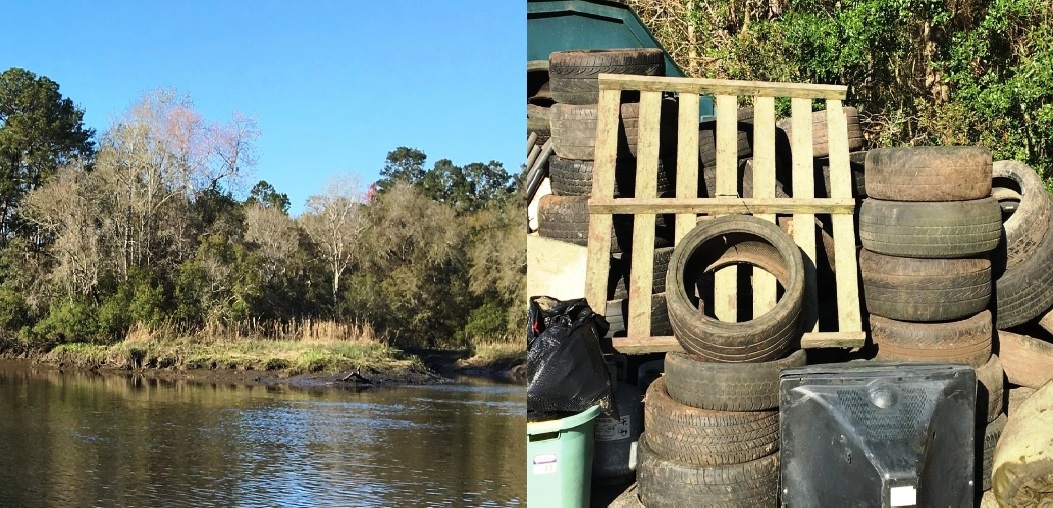
 McDaniel Consulting LLC is a strategy firm that helps organizations use history to build bridges within itself and its broader constituents.
McDaniel Consulting LLC is a strategy firm that helps organizations use history to build bridges within itself and its broader constituents.